Hamstring Muscle: Anatomy And Exercise
Hamstring Muscle Anatomy
The hamstrings are a group of muscles and their tendons at the rear of the upper leg. They include the biceps femoris, semitendinosus, and semimembranosus. The hamstrings flex the knee joint and extend the thigh to the backside of the body. They are used in walking, running, and many other physical activities.
The hamstrings are a group of 3 muscles:
- Semitendinosus
- Semimembranosus
- Biceps femoris
The muscles travel through two joints that’s why it’s weak extensor and strong Knee flexor muscles and have long proximal and distal tendons (long muscle-tendon junctions (MTJ)).
SEMIMEMBRANOSUS

Origin
It originates from superior lateral quadrant of posterior surface ischial tuberosity.
Insertion
It inserts on posterior surface of the medial tibial condyle.
Action
It extends hip, flexes and medially rotates the knee.
Nerve Supply
Tibial portion of the sciatic nerve (L5, S1)
SEMITENDINOSUS
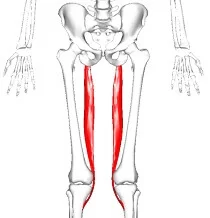
Origin
It originates from the superior medial quadrant and posterior surface of the ischial tuberosity.
Insertion
It inserts on the superior aspect and medial tibial shaft.
Action
It extends the hip, flexes, and medially rotates the knee.
Nerve Supply
A tibial portion of the sciatic nerve (L5, S1)
BICEPS FEMORIS
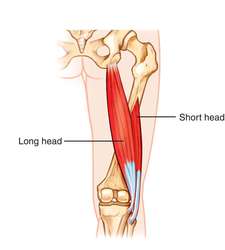
Origin
- The long head originates from superior medial quadrant of the posterior surface of the ischial tuberosity.
- The short head originates from middle third linea aspect, lateral supracondylar ridge of the femur.
Insertion
It inserts on the fibular head, with extensions to the lateral collateral ligament and the lateral tibial condyle.
Action
It flexes the knee, rotates the tibia laterally, and extends the hip joint.
Nerve Supply
- The long head is supplied by the tibial component of the sciatic nerve (L5, S1).
- The short head is supplied by a common peroneal component of the sciatic nerve (L5, S1).
Blood Supply
The profunda femoris artery also referred to as the perforating branches of the deep femoral artery, provides circulatory support to the hamstring muscle complex. A branch of the femoral artery is called the profunda femoris artery. The inguinal ligament serves as the border between the femoral and external iliac arteries.
Generally speaking, the major arteries that the thigh’s deep veins follow have the same name. The femoral vein is responsible for substantial venous drainage of the thigh. It accompanies the femoral artery and receives extra venous drainage from the profunda femoris vein. The femoral vein changes to the external iliac vein at the level of the inguinal ligament, just like the femoral artery.
Lymphatic Drainage
Similar to the artery supply, the lymphatic drainage of the thigh eventually empties into the lumbar lymphatic trunks and cisterna chyli.
Embryology
During weeks 4 to 8 of embryogenesis, a major part of the development of the lower extremities takes place. The embryonic mesoderm gives rise to the hamstring muscles, just like all other skeletal muscle tissue. The initial limb bud develops from the lateral plate mesoderm. Mesodermal cells migrate from the somites in the early stages of embryogenesis.
They develop into myoblasts, which multiply and assemble to generate functional muscle tissue. This is caused by a wide range of intricate physiological signals, including fibroblast growth factors, sonic hedgehog, and Wnt7a, that control the subsequent organization and symmetry of the structures that are created.
Anatomical Variations
Surgeons need to be aware of anatomical variations in the hamstring muscle even though they are rare. The hamstring muscle group, except for the small head of the biceps femoris, normally originates from a conjoint muscular tendon coming from the ischial tuberosity. It’s interesting to note that some accounts describe variations in which the long head of the biceps femoris and the semitendinosus appear to have different tendinous origins. A third head of the biceps femoris and an abnormal muscle inserted into the semimembranosus were discovered, according to another 2013 report.
A patient with a bilateral lack of semimembranosus muscles has also been reported. This discovery was made by accident during an MRI after the patient complained of knee pain following a tumble. Given that hamstring autografts are a popular option for ACL restoration, this finding may be pertinent in the context of ACL repair, even if the research did not specify whether or not the patient had experienced symptoms due to this uncommon finding previous to his presentation.
Fibular head and neck neuropathy is the most prevalent site of common peroneal nerve entrapment neuropathy. A 2018 study found that variations in the short head of the biceps femoris are linked to common peroneal neuropathy. In this instance, the gastrocnemius and the short head of the biceps femoris were separated by a 4.4 cm tunnel that housed the common peroneal nerve.
Clinical Importance
Hamstring Muscle Injury
A hamstring injury can occur if any of the tendons or muscles are stretched beyond their limit.
They often occur during sudden, explosive movements, such as sprinting, lunging, or jumping. But they can also occur more gradually, or during slower movements that overstretch your hamstring.
Recurring injury is common in athletes and sportsmen, as you’re more likely to injure your hamstring if you’ve injured it before.
Regularly doing stretching and strengthening exercises, and warming up before exercise, may help reduce the risk of injuring your hamstring.
Hamstring Strain
Both top athletes and casual athletes frequently suffer from hamstring strains. Apart from their great frequency, hamstring injuries also have a tendency to heal slowly and recur. After resuming their sport, about one-third of people with hamstring injuries are thought to re-injure themselves within a year.
Most hamstring strains arise in high-risk activities such as sprinting, when sudden changes in speed or direction induce excessive muscular stretching. The most often damaged hamstring muscle is the biceps femoris, which is followed by the semimembranosus and the semitendinosus.
Depending on how severe the patient’s symptoms are, hamstring strain injuries are categorized as mild (Grade I), moderate (Grade II), or severe (Grade III).
Less discomfort and functional impairment, along with little to no disruption of the hamstring myofibrils, are characteristics of grade I injuries.
Partial-thickness tears to the musculotendinous fibers are classified as grade II injuries. Patients report feeling more pain and definitely losing strength.
Severe pain, hemorrhage, substantial weakness loss, and a full-thickness tear to the hamstring tendon or muscle are the symptoms of grade III tears. For Grade III and Grade II/III tears (tears affecting the distal part of the hamstring), an orthopedic evaluation is advised.
In order to reduce swelling and inflammation during the acute phase of hamstring injuries, treatment initially consists of rest, protection, ice, compression, and elevation. The range of motion should be determined by the patient’s pain threshold because overstretching the hamstrings can result in the production of scar tissue.
Non-steroidal anti-inflammatory medicines (NSAIDs) have a somewhat debatable role in treating hamstring injuries; some research fails to find benefits for healing while others point to potential side effects.
Short (5 to 7 day) NSAID courses, however, should only be used as analgesics because they do not substantially impair recovery. Alternative pharmaceutical medicines have been investigated to improve athlete recovery, including platelet-rich plasma (PRP). The use of PRP for injuries caused by muscle strains is not well-supported by research.
Exercise regimens emphasizing eccentric contraction have been proven to dramatically reduce recovery time in individuals who have healed enough to start therapeutic activities.
These treatment plans can be modified in accordance with the patient’s stage of recovery and can keep the rate of re-injury from rising. While hamstring stretching is frequently recommended to reduce the likelihood of re-injury, there has been no evidence that hamstring flexibility training lowers the frequency of re-injury.
Exercise of Hamstring Muscle
Hamstring muscle exercises are mainly two types:
- Stretching exercise
- Strengthening exercise
Stretching Exercise of Hamstring Muscle
1. Hamstring Muscle Stretch in Sitting Position

- Sit on the floor with both legs out straight.
- Extend the arms and reach forward by bending at the waist as far as possible while keeping the knees straight.
- Hold this position for 15 to 30 seconds.
- Relax back into the starting position.
- Repeat three times.
Be sure to stretch until a gentle pull is felt in the back of your thighs. If you feel any excessive pain, you should stop the exercise.
2. HURDLER HAMSTRING MUSCLE STRETCH

- Sit on the floor with one leg out straight.
- Bend the other leg at the knee and position the sole of that foot against the opposite inner thigh.
- Extend the arms and reach forward over the one straight leg by bending at the waist as far as possible.
- Hold this position for 10 seconds.
- Relax.
- Repeat with the other leg.
3. Standing Hamstring Stretch ( BOTH LEGS TOGETHER)

The next hamstring stretch is a simple one to do anywhere at all. It is done in the standing position and stretches both legs at once. Here is how you do the standing hamstring stretch:
- Stand and cross the right foot in front of the left.
- Slowly lower the forehead to the right knee by bending at the waist.
- Keep both knees straight.
- Hold this position for 15 to 30 seconds.
- Relax.
- Repeat for the other side by crossing the left foot in front of the right.
4. Standing Hamstring Stretch (ONE LEG AT A TIME)
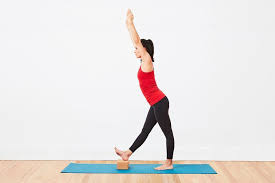
The one-legged standing hamstring stretch is quite possibly the easiest hamstring stretch to do. It can be done anywhere home, office, or outdoors and it requires no special tools.
- Stand up straight with one heel resting on a small stool. If outside, one can use the curb, but be sure to watch for cars.
- Keep the knee straight.
- Reach both arms up toward the place where the wall and ceiling meet. If outside where there is no wall or ceiling, simply reach up into the air so that the arms are about even with the ears. Reaching the arms up, as opposed to reaching down toward the foot, will keep the back straight.
- Keep the back straight. One should be bending forward slightly from the hips.
- Reach forward and feel a stretch in the hamstring behind the thigh.
- Hold the stretch for 15 to 30 seconds, and repeat three times.
5. RUNNER’S HAMSTRING STRETCH
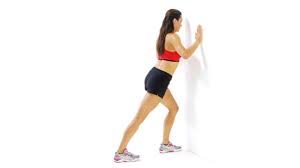
The runner’s stretch is a common flexibility exercise for your hamstrings
- Stand one foot from a wall and place the hands on the wall at shoulder height, shoulder-width apart.
- Take a step back with one leg while pushing into the wall
- Keep the back straight and press the heels into the floor.
- Hold for 15 to 30 seconds.
- Step forward and repeat with the other leg.
- Repeat the exercise three times on each side.
Strengthening Exercise of Hamstring Muscle Stretch
1. STATIC HAMSTRING CONTRACTION

- Begin this exercise in sitting with the knee bent to about 45 degrees.
- Press the heel into the floor tightening the back of your thigh.
- Hold for 5 seconds and repeat 10 times as hard as possible pain-free.
2. BRIDGING
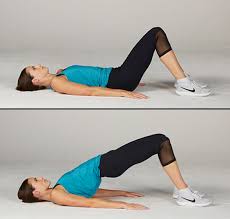
- Begin this exercise lying on the back in the supine position.
- Slowly lift the bottom pushing through your feet, until the knees, hips, and shoulders are in a straight line.
- Tighten the back of the thigh while performing this.
- Hold for 3-5 seconds then slowly lower the bottom back down.
- Perform 3 sets of 10 repetitions provided the exercise is pain-free.
3. SINGLE LEG BRIDGE

- Lie flat on the back with the knees bent and feet flat on the floor. The feet and knees should be hip distance apart.
- Tighten the abdominal muscles slightly to engage the core and stabilize the lower back.
- Lift up into a simple bridge position but as one holds the bridge position, lift one foot off the floor and extend the knee as shown.
- Hold for 3-5 seconds, bring the foot back down, and then lower the buttocks to the floor.
HAMSTRING CURLS WITH GYM BALL

- Lie on the back with the feet and lower calves resting on a gym ball with knees straight and arms crossed over the chest.
- Slowly curl the ball towards the body by bending the knees and then slowly roll the ball away.
- Repeat this exercise 10 times.
FAQ
What are the 4 hamstring muscles?
The hamstrings are a group of 4 muscles:
Semitendinosus
Semimembranosus
Biceps femoris Long Head
Biceps femoris Short Head
What are hamstrings and their function?
Your hamstring muscles are skeletal muscles located at the back of the thigh. They’re voluntary muscles, which means you control to move and work. Hamstring muscles help to bend the Knee and also help to move your Hip backward. You use these muscles in day-to-day activities such as walking, climbing stairs, stair-climbing, doing squats, and other various activities.
Why is it called a hamstring?
The hamstring comes from the Old English word Hamm, which means“hollow or bend of the knee,” and string, which means to a tendon. Many medical terms use hamstring to refer mainly to the two groups of tendons that are located at the back of the knee where the hamstring is inserted into the tibia and fibula.
What are the benefits of hamstrings?
Strong and flexible hamstring muscles help your knees and hips to function properly and provide protection from injuries. Hamstring stretching and strengthening exercises can help to improve flexibility and strength and also help to relieve lower back pain.
Where is the hamstring located?
The hamstring muscles located at the Back of the thigh – run down the back of the thigh.

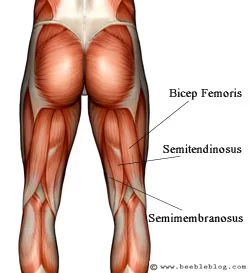
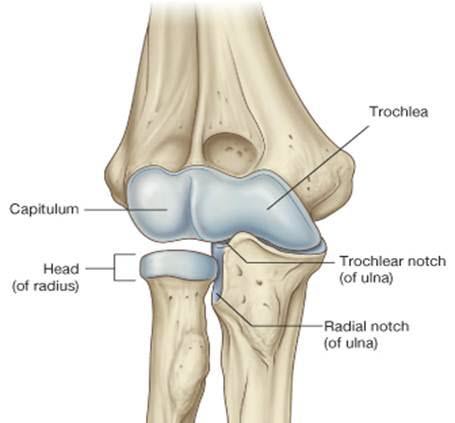
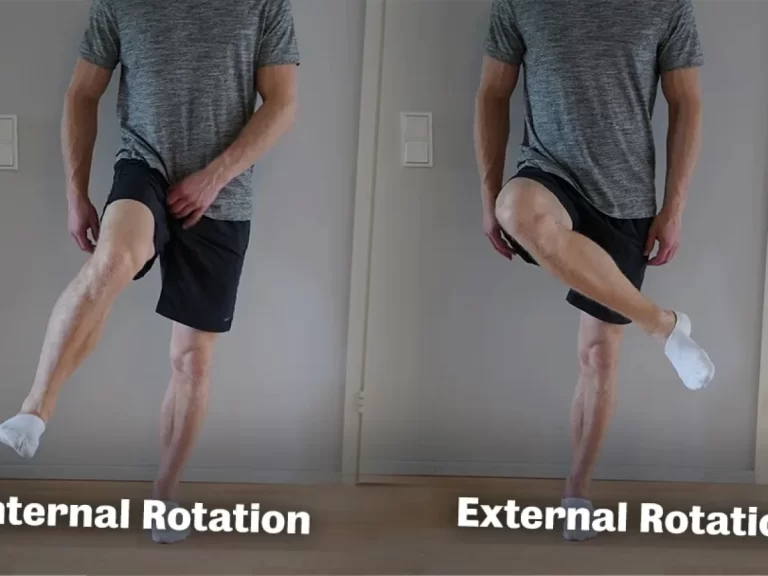
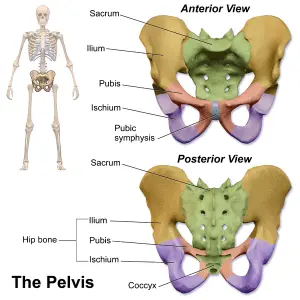
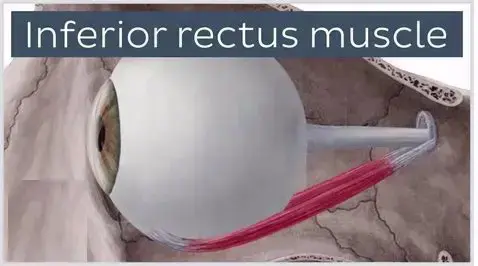
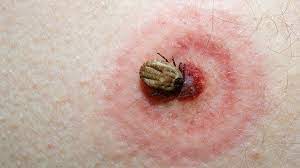
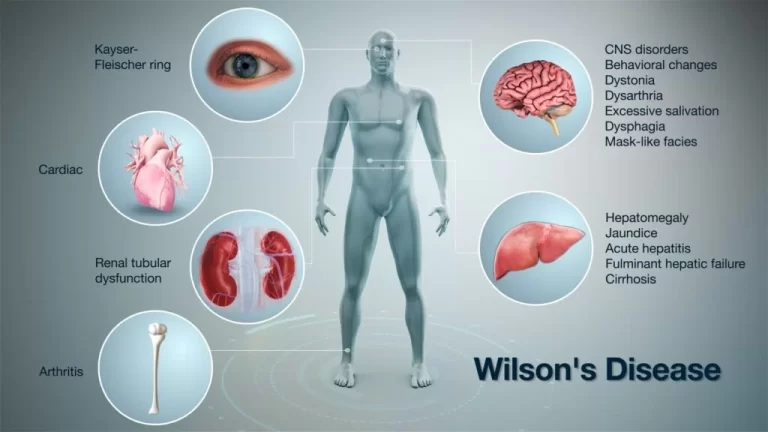
70 Comments